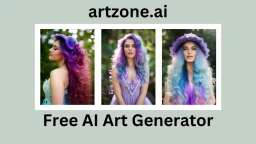How Play-to-Earn NFT games work

What are play-to-earn NFT games?
To give a brief recap of what NFTs are, NFTs are unique, digital collectables on the blockchain. They can be sued to represent characters, consumables and other tradeable items. To understand play-to-earn NFTs, one should first understand the game-fi world.
“Game-Fi” is derived from combining ‘gaming’ and ‘decentralised finance’. These games are essentially games that have been developed on the blockchain. The longer one plays the game, the more rewards the player can receive. Rewards come in the form of coins and sometimes NFTs, alongside other digital assets, depending on the game mechanism. These assets can later be converted to real money outside the metaverse.
Play-to-earn NFT games thus allow one to earn an income while gaming on the blockchain. These games first gained popularity as an alternative to a steady stream of income from a 9-5 job. This flexibility made it especially popular in low-income countries where the real-life economy has become insufficient for one to earn sufficient income. In this article, we will be introducing 4 ways for you to earn money through these play-to-earn NFT games.
How to earn money from play-to-earn NFT games?
1. Playing according to game mechanics
Every NFT game on the blockchain has some form of reward to be earned from playing it. By going through the mechanics of the game, you will be able to accumulate the in-game currency or sometimes even receive rewards. These currencies and rewards can be traded on an NFT secondary market regardless of what game was played. The price will depend on the market demand for this reward as they are sold via auctions. Do note that since the value of these in-game rewards is highly speculative, it is possible to earn or lose money by only using this method.
2. Breeding
Breeding essentially means to mint another new token to be put into circulation in a game. These new NFTs created can also be taken out of the game to be sold on secondary markets. Once again, prices depend on the market demand for these NFTs.
Breeding mechanisms differ for every game. Some NFT games require 2 parent NFTs to merge in order to create a new one. For example, in the game CryptoKitties, players can mate a male and female cat, and the resulting offspring is a new NFT.

This new NFT will have characteristics of both the parent NFTs and can be sold on NFT marketplaces. Specific characteristics being found in the offspring will influence the market demand for this new NFT. Another way to do this is by gathering the necessary equipment needed to forge a new piece of equipment. This is seen in the game EmberSword where players can submit NFT collectable designs of various weapons. If their design is selected, artists stand to earn royalties from the secondary sales of these designs.

3. Trading gaming rewards
Play-to-earn NFT games allow players to trade their in-game rewards and purchases between one another both in and out of the game. In the same way that NFTs are wholly owned by its creator or the current holder of the NFT, the same can be said for these in-game rewards. Even in the event of a developer abandoning the game, any rewards from play-to-earn NFT games are fully owned by the player. These purchases can then be taken out of the game to be traded with others on the secondary market. Play-to-earn games thus provide various ways to earn cash through online gaming, in ways that cannot be done with real-life gaming.
In addition to this, the players of the game decide the direction in which the game develops. Decentralised games often reward their players with utility tokens. The more gamers play the game, the more rewards they get, meaning the larger of a say they have in the direction of the game. If you’re unfamiliar with the term utility token, you can simply think of it as shares of a company. The more shares a shareholder has, the more weight their decision has on the direction of company decisions.
4. Streaming
Streaming can be done regardless of what game is being played. The market is saturated since there are various streamers playing the same game, which might make it difficult for any streamer to stand out. Therefore, many blockchain streamers end up giving financial advice on the blockchain while playing the games. Streamers are able to gain traffic by offering exclusive releases to subscribers. Popular platforms that streamers use include Twitch and YouTube, where streamers get income from subscriptions, advertising, sponsorship and reviews. Popular streamers to watch include Crypto Gamers, On Chain Gaming and Go Shiny Hunter. Check out one of the streams here!
Play-to-earn NFTs are a fun way to earn some money on the side, but allow us to offer you some advice. It is recommended for you to straighten out how you want to use these games to make money before jumping straight into it. Some games offer cryptocurrency as rewards but others offer NFTs. While it is possible to mint and gain secondary transaction royalties by selling these NFTs, it also takes time. NFTs are after all rather illiquid since buyers take time to bid for the item. You are advised to shortlist games that give you the rewards you want before using play-to-earn games as a source of income.
Thanks for reading! At Niftyzone, we value your craft and wish to share it with the NFT Community!
Follow our Twitter and Telegram for more updates on our Marketplace.
Feel free to contact us for any further inquiries, or have a look at our FAQ page as well!









